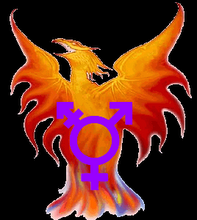"I need my sleep, man. You know what I mean? I need about 8 hours a day... And about 10 at night and I'm good, I am, I'm good..." Bill Hicks
so, along with a moral outrage at the world and a love of the truth in humour I have something else in common with Mr Hicks.....
sleep is something that you may take for granted, except for the insomniacs amongst you of course...
apparently when I sleep, I wake up approximately 47 times an hour, thats wake up, fall asleep, wake up, fall asleep....you get the idea...that's tiring!
though sometimes it feels more like....
come the morning.....
its something called
sleep apnoea
overweight? heavy drinker? smoke too much? yeah and no, cos you can be like this and be none of these. So I snore a lot...poor Denise.....and when I'm awake, I'm not really cos I'll be nodding off, my head on the keyboard whilst in a dream state thinking I'm perfectly fine. Some people pay good money for drugs to do that, but it's a nuisance when you're standing up fine and then - like a switch is pulled - you drop to the floor. No warning, no time to go 'oh goodness me, I'm falling down' and such like...I now use a CPAP machine...lovely name, that.
continuous positive airway pressure it means....
at last, Denise gets some peace :D
A continuous positive airway pressure (CPAP) machine was initially used mainly by patients for the treatment of sleep apnea at home, but now is in widespread use across intensive care units as a form of ventilation. Obstructive sleep apnea occurs when the upper airway becomes narrow as the muscles relax naturally during sleep. This reduces oxygen in the blood and causes arousal from sleep. The CPAP machine stops this phenomenon by delivering a stream of compressed air via a hose to a nasal pillow, nose mask or full-face mask, splinting the airway (keeping it open under air pressure) so that unobstructed breathing becomes possible, reducing and/or preventing apneas and hypopneas. It is important to understand, however, that it is the air pressure, and not the movement of the air, that prevents the apneas. When the machine is turned on, but prior to the mask being placed on the head, a flow of air comes through the mask. After the mask is placed on the head, it is sealed to the face and the air stops flowing. At this point, it is only the air pressure that accomplishes the desired result. This has the additional benefit of reducing or eliminating the extremely loud snoring that sometimes accompanies sleep apnea.
the last few months have been ...different. I collapsed at work back in November and was sent home till I 'had got it sorted'....back at work now these last two weeks and things are very different....I love the novelty of being awake in the daytime :D





No comments:
Post a Comment